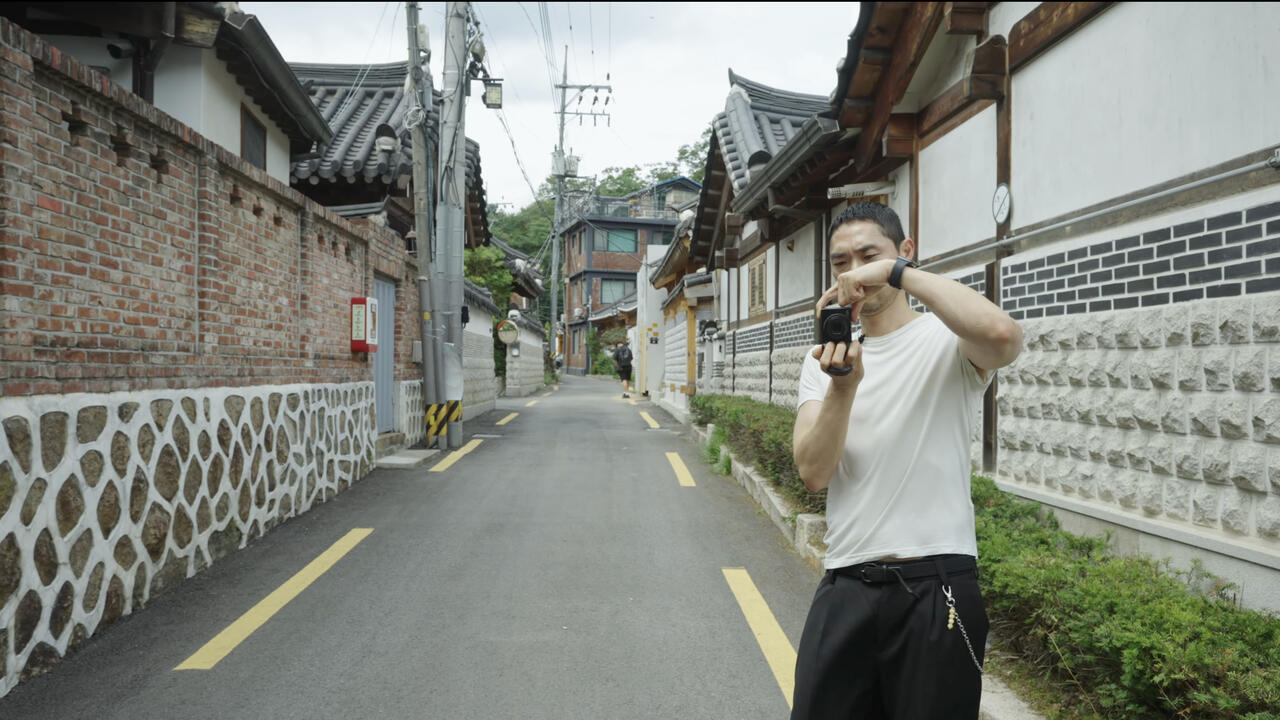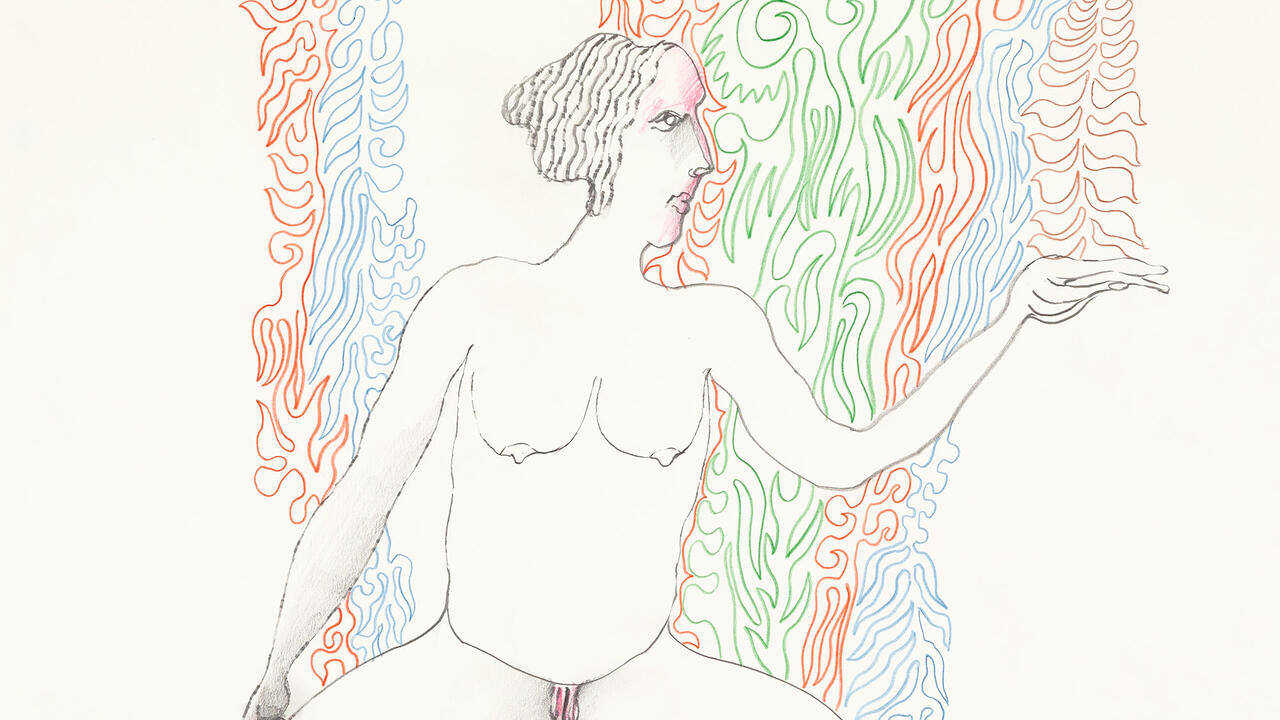Till Exit
You enter the glass-fronted shop unit on Marylebone High Street and find a large, grey-carpeted space. Soft piano music is being played on a stereo, the kind of tune that is often used to suggest light rain - that ominous, mock-innocence before a storm. A young German who speaks no English gestures towards an A4 sheet of paper on the floor: this scribbled note informs you that the exhibition, Flood, is in the basement and that you should follow the projectors.
There is a line of twelve projectors on the floor, each a pace apart, leading away from the large windows, through a door and into a darkened space beyond. The projectors not only throw light out through the lens onto the wall, but also directly downwards onto the floor. As you follow the projectors, your feet pass through the beams, trailing a shadow along the wall at ground level. You enter the next room and take a right turn, following another line of these devices. It is now so dark that it is a strain to see any of the surroundings, other than the bright squares illuminating the walls. Another turn through a doorway. In the near blackness, confused by a large mirror on your left, you trip over a low step.
More projectors lead you down a short corridor terminating in darkness. Dim pulses of light from somewhere on the left help you to pick out a small sign reading 'Exhibition Continues'. You turn left and head in the direction of the brief flashes. At this point you realise that you are about to place your foot on the top of a flight of concrete steps. You descend towards the main body of the installation.
At the bottom of the steps you find a room with a low concrete ceiling, or is it a high floor? During the brief moments when you can see, it becomes apparent that this raised floor is made from square sheets of metal grilling. It is angled: it rises away from you like a swelling wave. It pours through a corridor, out of sight. The only light is provided by a selection of fluorescent strip lights, which either lie on the grating or jut through it at angles. They flash on alternately, but mostly it is disconcertingly dark.
Each light possesses its own particular buzz when flicking on, creating a strangely musical effect. However, when you venture out onto the metal grids they creak and bang alarmingly. Black and white patterns can be seen below the grids, but are glimpsed too fleetingly to be recognised. Are these post-apocalyptic cave drawings - mysterious and half glimpsed in a disused space?
You carefully avoid the protruding light tubes only to crack your head against the concrete beams which line the ceiling. The corridor through which the floor continues is short and leads to a slightly smaller room. Here the grating level rises still higher, reaching to within a metre of the ceiling. The day before I come here, 900 people drown on the ferry 'Estonia'. It is not difficult to imagine the breathing space in this room rapidly shrinking as a flood rises, but this experience is too static to be one of fear. You are not trapped. Rather, the exhilarating apprehension puts you in mind of Carter taking his first steps through the tomb of Tutankhamen.
The room's original strip light fittings are still in place, but at no point do they come on. As the lights become more frequent, the space under the grilling becomes visible: strange black shapes are painted onto a white surface held a few inches below your feet. When illuminated from below, the material is revealed as tracing paper; dim orange light causes the patterns to glow. Are these the remnants of a sinful civilisation, washed away by a Biblical flood? Or are they the flood itself, carrying the detritus of an industrial age upon its surface like oil?
The shapes are brushed rapidly. You begin to see a large image across the other side of the room. You approach, but end up too close to make out more than meaningless fragments. Most of the large images are like this. Some smaller drawings are readable, however: they depict what may be children, scratched into the black paint in a naive style. The recognisable shapes are simple swirls, spirals and other standard symbols. They embody notions of universal spirituality and oneness with nature, our ability to believe, to have faith, to long for otherness - timeless ideas nevertheless deemed wacky and out of place these days. These are lurking, deep-seated in the ancient architecture of our brains - something to be covered over and ignored in an advanced society, but there all the same. Things which may be what the artist terms the 'kernel of existence'.
But these drawings lack weight and density, they are neither the remains of a civilisation nor are they a distillation of our primal concerns. They are merely rapid, organic shapes. So finally, when all the lights are on and the magic is gone, we are left standing on a false floor, high and dry. And every half hour the cycle repeats.

















